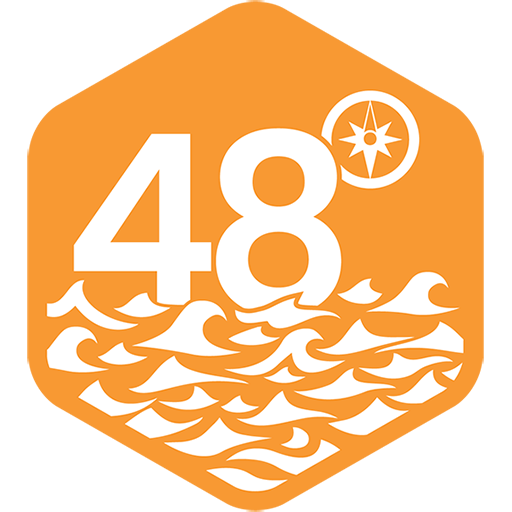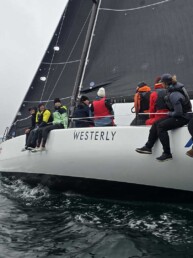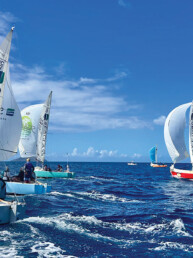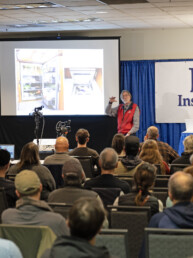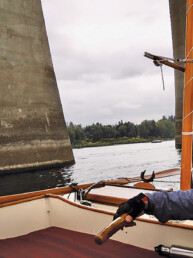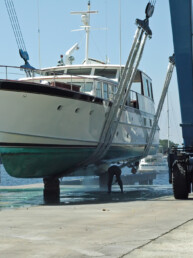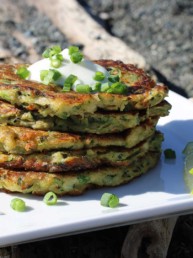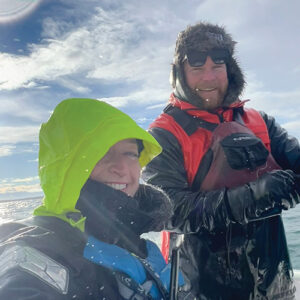
Pause for a moment, and imagine a quintessential day of boating on the Salish Sea: wide, open waters stretching out before you, snow-capped peaks like a painted backdrop in the distance, and a pod of orcas breaching under a clear blue sky. Maybe you’re sailing on a dreamy reach toward the Southern Gulf Islands, or perhaps you’re throttled down, planing toward a sun-drenched and pastry-filled afternoon in Poulsbo, a wake trailing behind you in the golden light.
Or maybe—just maybe—you’re fully exposed to a wintertime southeasterly gale in the Straits, very much a small craft in the midst of a Small Craft Advisory. Or, perhaps, you’re dodging half-sunken logs and tidal eddies, and following highway signs nailed to dilapidated pilings along a muddy slough in the Skagit Valley.
Those may not sound like everyone’s ideal days on the water, but for me and my partner, Gavin, it’s exactly the kind of oddball magic we chase. And thankfully, we’ve got just the right boat for both situations.
If you haven’t heard the name Surf Scoter yet, here’s the quick backstory: Gavin spent the better part of three years building this 24-foot powered outrigger, a design collaboration between PNW legends Russell Brown and Paul Bieker. (See the July 2024 issue of 48° North for the full build story.) She’s fast, freakishly efficient, and feather-light with almost no draft—a boat that pairs clever engineering with elegant lines. She turns heads in marinas and gets knowing nods from fellow tinkerers. We’ve tested her mettle in bigger water, punching through swells and wind that would humble larger vessels. But some of our favorite adventures have been the slower, stranger ones—exploring the hidden corners of the Salish Sea most cruisers skip or can’t reach because they’re constrained by their draft.
In one particularly memorable week, we experienced both extremes: a harrowing Straits crossing in high-octane conditions, and a meandering tour of some of Puget Sound’s most overlooked backwaters.
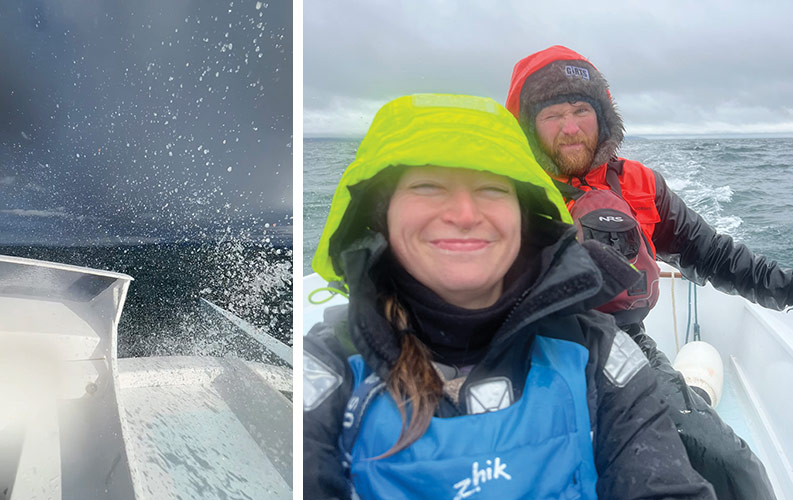
Spicy: The Strait Strikes Back
It all started with a deceptively benign forecast. The holidays had just wrapped up, and we needed to bring Surf Scoter home from Victoria, B.C., to Anacortes—a 35-mile run across exposed water. The predictions called for 10 knots from the east, dying off in the afternoon.
What we got instead was a relentless 25 to 30 knots from the south. And building.
As we cleared Victoria’s Inner Harbour, it became clear that this was going to be a serious passage. One quirk of an outrigger like Surf Scoter is that she’s most stable when her ama (the smaller float on the starboard side) is to leeward—it serves as a brace against the waves. Unfortunately, the wind direction meant our ama was on the windward side, lifting out of the water like a skeptical eyebrow. In very rare, extreme scenarios, a strong enough gust or wave could flip the ama over the main hull, capsize the whole boat, and leave us scrambling to safety.
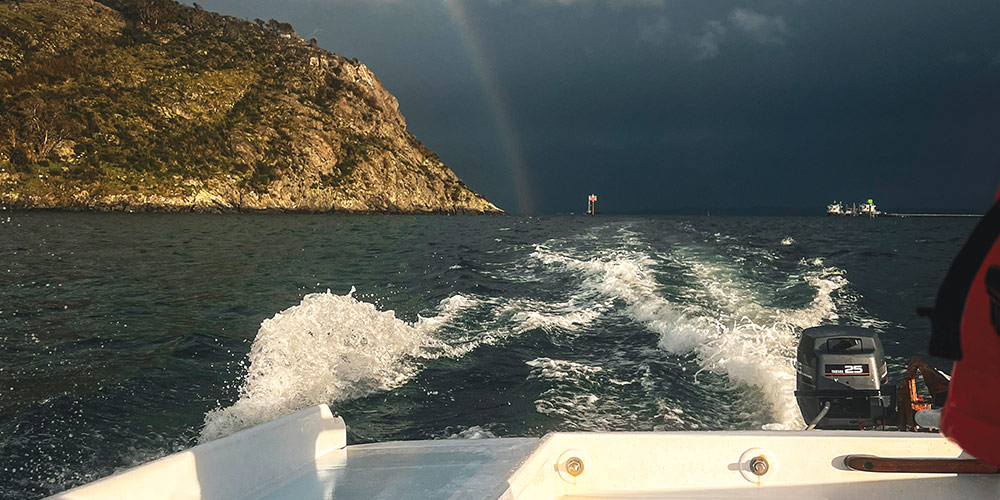
With that cheerful possibility in mind, we crept along the southern coast of Victoria—eyes peeled and nerves slightly frayed—heading toward Oak Bay Marina. Our mission? Add ballast. Surf Scoter is designed with a water ballast system, though it’s not fully operational yet. So, we did the next best thing: Gavin carefully climbed out onto the ama with a bailer and began the awkward task of dumping buckets of seawater into the hull by hand. It’s a tedious, ungraceful process, made even more surreal by the approach of a perplexed Canadian Search and Rescue officer.
“Are you in need of assistance?” the officer asked, his tiny, bewildered fluffball of a dog perched beside him.
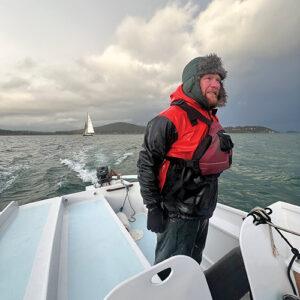
captain certainly
was.
“Nope, we’re all good!” Gavin called back gleefully.
“Then… why are you pouring water into your boat?” He wondered.
Fair question. We explained, and the kind officer accepted our unusual premise.
Once we’d added a few hundred pounds of ballast, we pointed northeast and began the nerve-wracking crossing to Roche Harbor—a downwind location that allowed us to run down the faces of the waves, instead of taking them beam-on. Needless to say, Haro Strait did not disappoint. It was a writhing mix of whitecaps and chop, with gusts that howled in our ears and sent spray flying sideways across the deck. Frigid waves splashed over the bow, soaking everything, while patches of sun broke through the clouds in dramatic, fleeting bursts. A pair of rainbows shimmered ahead of us, seemingly guiding the way toward the lighthouse on Lime Kiln Point.
It was a passage that tested the boat and her crew, demanding vigilance and patience in equal measure. It was exhilarating and uncomfortable, beautiful and brutal—the kind of crossing that keeps you alert, cold, and utterly alive.
Eventually, salt-crusted and half-frozen, we slipped into the relative calm of Roche Harbor. Tired, triumphant, and grinning like fools, we knew we’d been through something both grueling and rewarding, the kind of Type II fun that leaves you sore, briny, and deeply satisfied. A smooth customs check, the prospect of a hot shower back in Anacortes, and the familiar comforts of home waiting just over the horizon—that was more than enough. Sometimes, adventure is best measured by how good it feels to be done.
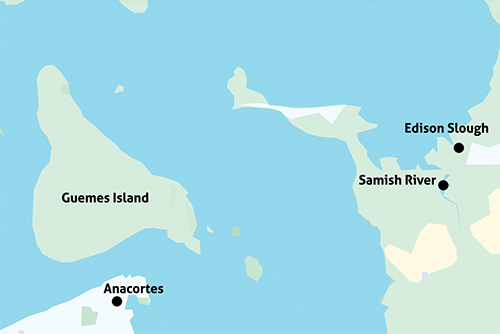
Sweet: Slough Dreams and Riverboat Fantasies
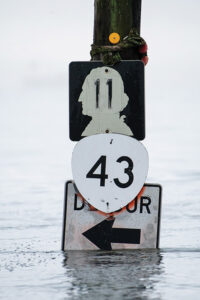
A few days later, a welcome weather window opened, and we pivoted from survival mode to slow cruising. Calm seas, dead winds and, this time, the forecast played nice.
We fired up Surf Scoter and pointed her northeast, this time with a much more relaxed agenda: river cruising. One of our longstanding dreams with this boat has been to venture up the lesser-traveled waterways of the Pacific Northwest—to see the hidden places where salt gives way to brackish, and civilization recedes into stillness. We call this our “Riverboat Fantasy” mode, inspired by the catchy David Wilcox tune of the same name.
The first stop? Samish Bay. We followed the narrow line of pilings into Edison Slough, careful to time our entry with a positive tide. Though there’s a channel of sorts, the water is shallow and the mud unforgiving. Still, Surf Scoter’s draft is laughably small—less than a foot and the deepest part of the boat is the outboard’s propeller—so we tiptoed our way inland without issue.
What we found in the slough was a different world. This was not the adrenaline-pumping thrill of an open-water crossing, it was cruising at its most meditative. Herons stood like statues in the shallows, bald eagles wheeled overhead, and ravens argued from the treetops. The slough is a birder’s paradise. And for hungry boaters? Even better.
We tied Surf Scoter off to random bits of hardware along the shore of Bow-Edison and made a beeline for Breadfarm—one of the region’s best bakeries—for fresh carbs and well-earned coffee. And, once again, we were greeted by a bewildered local, this time a Breadfarm employee.
“I’ve never seen anyone come here by boat before,” she said, eyes wide.
Well, we were happy to have changed that.
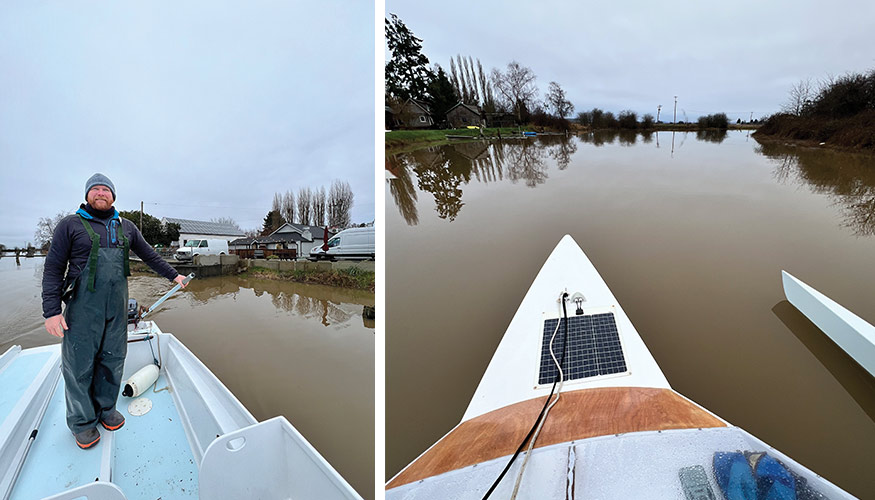
Right: Surf Scoter can explore waters many larger and deeper drafted vessels do not or can not.
Back aboard and still floating on a rising tide, we decided to push farther. Just south of Edison Slough lies another winding waterway: the Samish River. It’s even more rustic, even more peculiar. Road signs mark the turns like you’re navigating a country road and, at one point, a pair of surf scoters—the birds, not the boat—guided us along like an escort service.
We idled along until we reached the Samish docks, which are a series of weathered floats nestled among willows and grasses that you’ve likely seen if you’ve ever taken Chuckanut Drive between Bayview and Bellingham. A few boats, clearly long-term residents, swayed gently in the current. We waved to a man working on his boat, who raised a beer can in reply. The whole scene felt like a forgotten pocket of the Pacific Northwest, quietly resisting the rush of modern life.
At that point, we spun the bow back toward the bay—a tight maneuver with a multihull in a narrow slough. As we idled our way back out toward the bay, we took a moment to turn off the motor, letting the stillness seep in. With only the cry of a red-winged blackbird in the distance, it felt like time had paused, like we’d slipped into a dream. I watched the water swirl gently beneath our hulls and felt gratitude so sharp that it nearly hurt. We weren’t trying to get anywhere. We weren’t trying to make a weather window. We were just… floating. Present. And completely content.
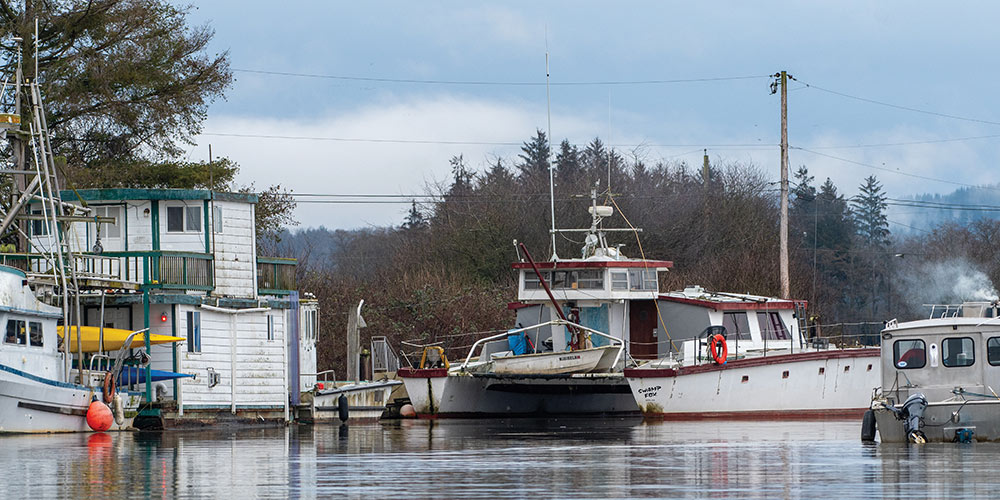
That said, we did still have to worry about the outgoing tide in Samish Bay, so we fired up the motor and started our cruise back to Anacortes, which maintained the affect pure serenity. Glassy water stretched ahead, and watchful red-tailed hawks monitored our progress. After braving chaos and cold earlier in the week, this gentle glide felt like a kind of reward—a reminder that the Salish Sea can soothe just as easily as it can challenge.
We crossed Padilla Bay, the muted skyline of Anacortes growing ever closer, throttled back accordingly, and savored every last moment of peace before reentering civilization. As we eased into our slip, Surf Scoter settled into her berth, gently bobbing in the familiar cradle of home. We rinsed off the salt and mud, and took a moment to breathe it all in.
These two radically different trips—one tempestuous, one tranquil—had left us with something rare: a balanced sense of place. Adventure doesn’t always have to mean struggle, and relaxation doesn’t always have to mean boredom. Profound experiences come from embracing the full spectrum of possibilities.
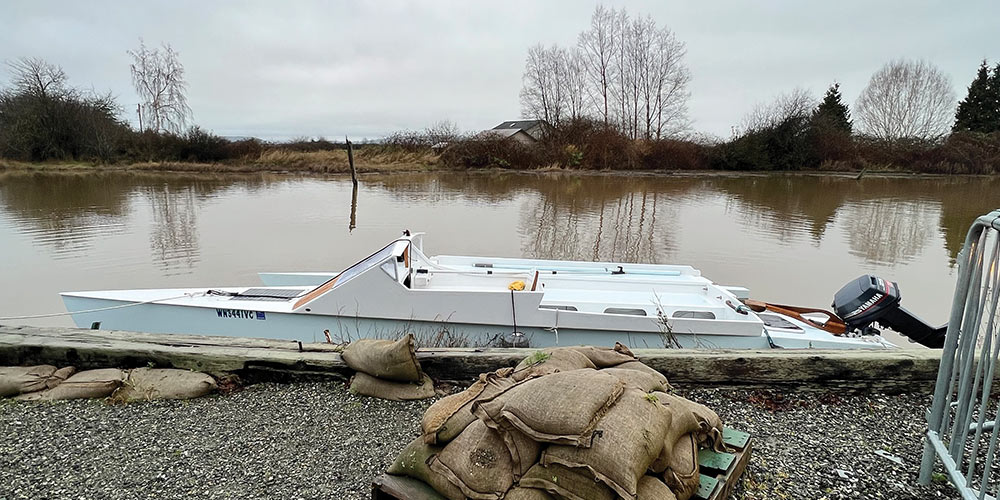

In the span of a single week, we’d danced with the extremes—lulls and gales, lazy drifts and white-knuckles—and this lean, purposeful little craft had carried us through it all, slicing cleanly through the chaos and the calm alike. And that’s the joy of this kind of boat, this kind of place, and this kind of partnership. It’s about blending peacefulness with pandemonium, and finding adventure in both the obvious and the overlooked.
So, when people ask us what Surf Scoter is “for,” as they frequently do, we just smile. She’s for crossing the Straits in a blow, and for sipping coffee in a slough. She’s for the backwater eddies, the bakery runs, the weird detours, and the wide horizons. She’s for the kind of cruising that values curiosity over convenience—the kind where you come home with wet socks, full hearts, and maybe a few loaves of bread in your drybag.
As any mariner in any vessel can attest, adventures on the Salish Sea aren’t always plotted on a chart. Sometimes, they just show up—spicy, sweet, or somewhere in between, and they’re always something to savor.
Ryan Samantha Carson calls Anacortes home. She’s an avid cruiser, racer, photographer, small business owner, and spends her days handling the advertising for 48° North.
